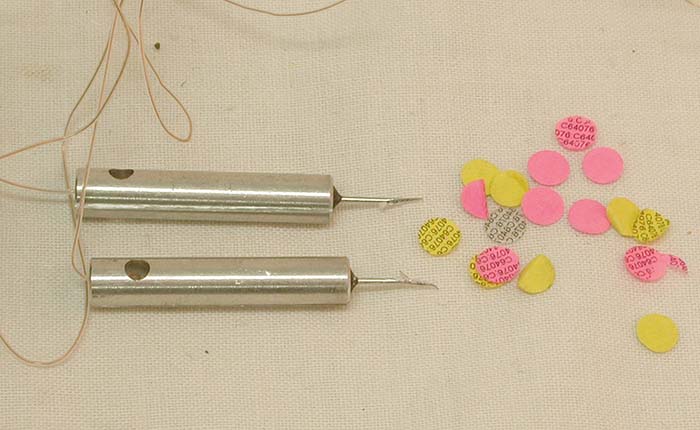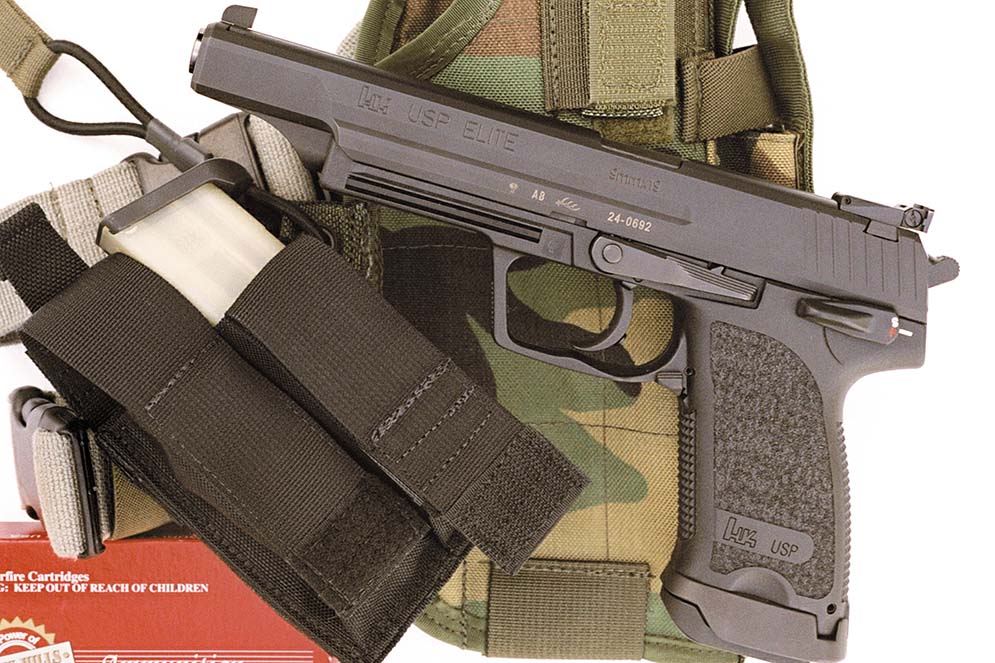By Dan Shea

With the recent events of 11 September 2001 driving our media, security issues have risen on the public radar. There are calls for many things, arming pilots, arming passengers, disarming everyone, on and on the “solutions” go. We haven’t really reached agreements on much of this, and it may be a considerable time before the issues are hashed out. One major discussion surrounding the problems of being armed on an airplane is about the effect of a stray round going through the hull of an aircraft. There has been a lot of sniping within the firearms community regarding this- a bit of it at your faithful correspondent for urging more exploration regarding projectiles and systems that won’t puncture the airplane’s outer shell. While it is true that a single puncture from a bullet won’t cause explosive decompression, someone hosing with an MP5 might well overcome the failsafes that are designed into the system. Those failsafes are generally that the pressurization system will handle an opening approximately the size of an airline window without too much trouble. You can see from that size failsafe, that one bullet hole wouldn’t really be too much trouble. Other information is that a hole of 20 square feet would not cause explosive decompression, but numerous experts I have spoken with intimate that is NOT their opinion on the subject, and that it would be important to not test that out with passengers on board. Of more immediate concern would be stray rounds hitting passengers. However, in the modern environment, where terrorists have flown hijacked aircraft full of innocent passengers into buildings killing all of them, perhaps the risk of a few stray bullets and casualties to stop a terrorist might well be considered acceptable. Survival can be emotionally cold. In any event…
There exists a possible solution to many of the problems that are being explored publicly; it has been around for quite a while and is tried and tested in many situations. I am speaking of the Taser. I recently attended a demonstration of the Advanced Taser M-26 and M-18 series weapons. These will both work within a 21 foot range, the M-26 is the more powerful 26 watt Law Enforcement model, while the M-18 is the civilian approved 18 watt sales model.

The Taser differs from a “Stun Gun” in many important ways. The most important is that when fired, the two Taser probes attached to wires stick into the problem individual, and he receives an automatic five second burst of the full 26 watts of high voltage, low amperage electricity. He can’t move away, he can’t look away and have it make a difference- the subject is a marionette at the hands of the firer. With a standard “Stun Gun” type unit, the operator must hold it to the subject and continue to hold it there while giving the electric charge. With the Taser, if the subject isn’t cowed by the first five second burst, he can quickly obtain another burst for himself- without the operator having to re-engage with him… and the cycle can continue until the subject is convinced that he is not getting away, and must submit.
The Taser utilizes what is termed “Electro-Muscular Disruption”. Essentially, the Taser achieves the desired effect of the perfect sniper shot- Central Nervous System Shutdown, without killing the individual. The 18 or 26 watt electrical current discharge actually overrides or scrambles the electrical signals sent by the brain to the muscles. No amount of will power, martial arts training, or crack cocaine can overcome this electrical interruption. No matter how bad you are, once you are on the wire you go down to the ground.

At the demonstration, Gunnery Sergeant Hans Marrero, USMC (Ret), Former Chief Instructor Hand to Hand Combat USMC, demonstrated how devastating the Taser is, and he explained how he had thought in the back of his mind that with his training and experience, he could overcome the Taser. He had taken the Taser as a challenge to his training, and was completely shocked when he was unable to overcome it. I watched many other people come from the audience- military, law enforcement, even the local TV news crew, and they all dropped when hit. For a refreshing change, your faithful correspondent was able to learn from watching, and didn’t find it necessary to take a “Hit” from the Taser. They told me I didn’t know what I was missing- but- if memory serves, I have a good reference on the sensations of being jolted with electricity and dropped like a rock in a pond, and I didn’t feel the urge to relive those experiences. It was indeed impressive. (Gunney Marrero teaches his CQB “Close Quarters Battle” system in training programs for law enforcement- call 1-800-978-2737 ext 2016 for more information- he’s a straight shooter with lots of the right credentials- Dan).

The Taser M-18 or M-26 weighs 18 oz, utilizes 8 AA batteries, either a rechargeable set or other common AA batteries. It is robustly built like a firearm, feels and aims like a handgun, but only has one moving part- the safety. Firing is depressing a “Trigger” button, which has no travel.
There has been some concern about abuse of the system. This would include allegations that the system could be used to “Torture” individuals. Taser International has included a tamperproof dataport on the LE versions that records time as well as the dates of use- this can be downloaded at the department to monitor officer’s use of the Taser developing a history of that officer’s use of the Taser. Another safety feature for management, is that each Taser cartridge has a unique serial number, and it has approximately 40 “AFID” tags that fly out of the cartridge when fired. These tags identify what cartridge was fired, indicating who fired it. This system has covered the majority of questions raised about misuse of the system.
Taser International had an impressive array of individuals giving testimonials on the use of the Taser, as well as some very good audio visual demos, and the obligatory attempt to make a chain of people to get the Taser shock through them all at once by holding hands- in this case over 100 individuals lay on the ground in a circle and received the electrical jolt in tandem. Probably more interesting to this correspondent than watching the mass spasm attack in the hotel lobby, was the fact that several prominent Airline pilots came and spoke with us about their companies’ intentions to put an Advanced Taser in every cockpit. These included Captain John Szakach, the Director of Flight Standards and Quality Control for United Airlines, and Mr. Brian Booth from ATA. In quiet conversations off to the side, both men indicate strong support for the Taser system. Neither vocalized any opinions either positive or negative regarding arming pilots with conventional firearms, they both gave carefully considered positive opinions on the Taser being in the pilot’s possession, and I was convinced by these discussions that these professionals considered the Taser to be a great asset to the pilot’s ability to control his mission.

SAR take on this:
Positive side is that it works, isn’t lethal, is more effective in that desired instant incapacitation of a subject than most firearms, isn’t very dangerous to innocent bystanders, and is relatively easy to operate. The downside of this system is that you have to hit them with both probes, and without lots of training, reloading for a second threat is time consuming. These are not semi automatic firearms, the Tasers are one shot at a time. That being said, you can shock someone with the end of the Taser after removing the cartridge, replace the cartridge and shock the first individual back into submission, or add a new cartridge for another individual. Concealing who is on the wire at the time could prove effective on a multiple assailant scenario, and people really don’t recover that quickly from a Taser event- it seems to take the stuffing out of the subject, removing the desire to assault and replacing it with a desire to “Not get hit with the Taser” again.
Taser International is selling their M-18 product on the civilian market now, and they are working through the standard firearms distributor network. If you are a dealer, contact them to see which distributor you work with is carrying it, and if you are an interested agency or individual, you can contact them to find out what dealers near you carry the product. Several of SAR’s readers are Taser distributors, including John Parmerton of Applied Tactical Technologies Inc in Babylon, NY (Contact info@att-tactical.com. 1-800-223-1204) who is operating Taser Instructor classes and can arrange certification of instructors, or on site training for departments.
Taser International
7860 E. McClain Dr Suite 2
Dept SAR
Scottsdale, AZ 85260
1-800-978-2737
email: sales@etaser.com
Website: http://www.taser.com
| This article first appeared in Small Arms Review V6N1 (October 2002) |












